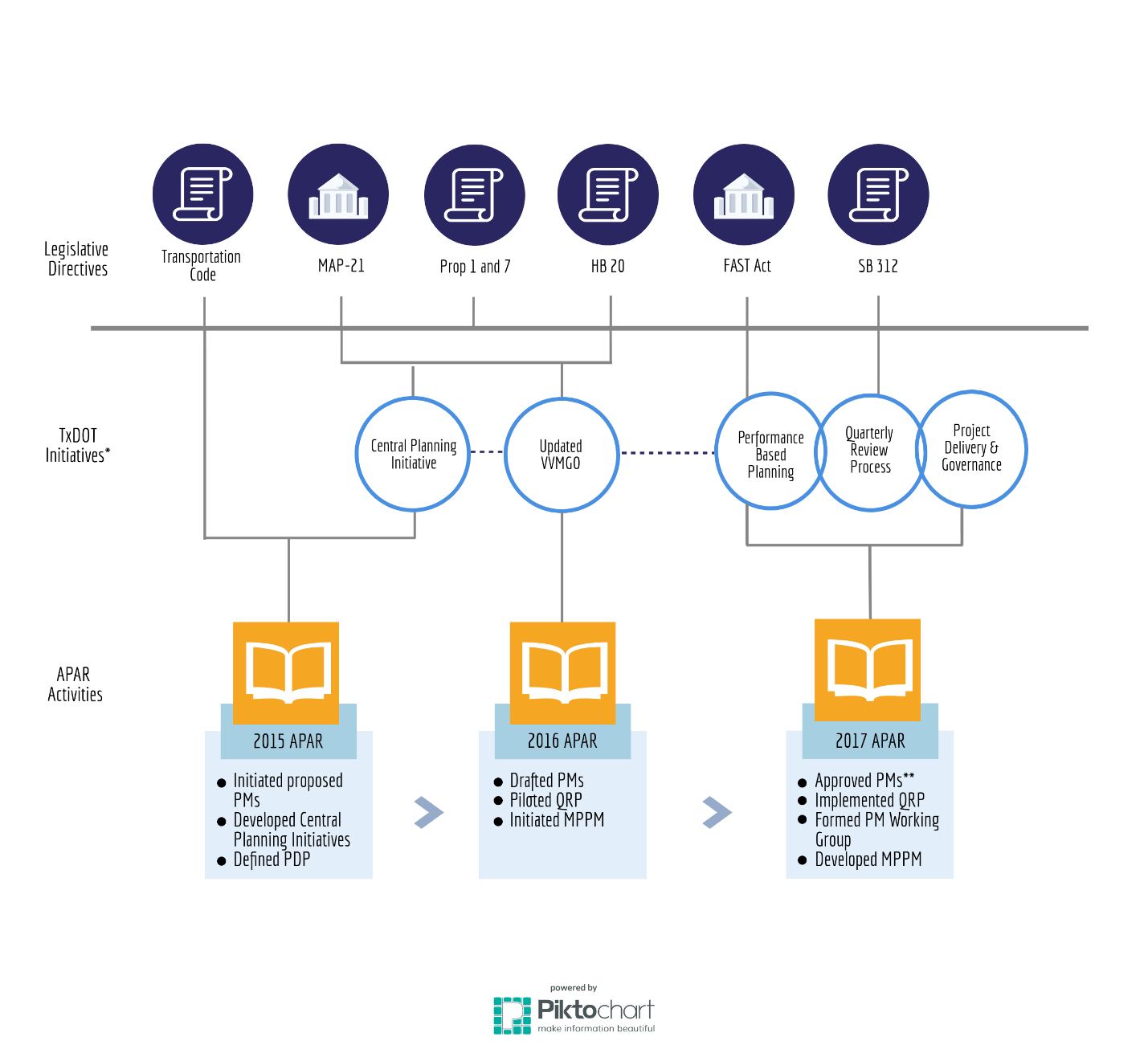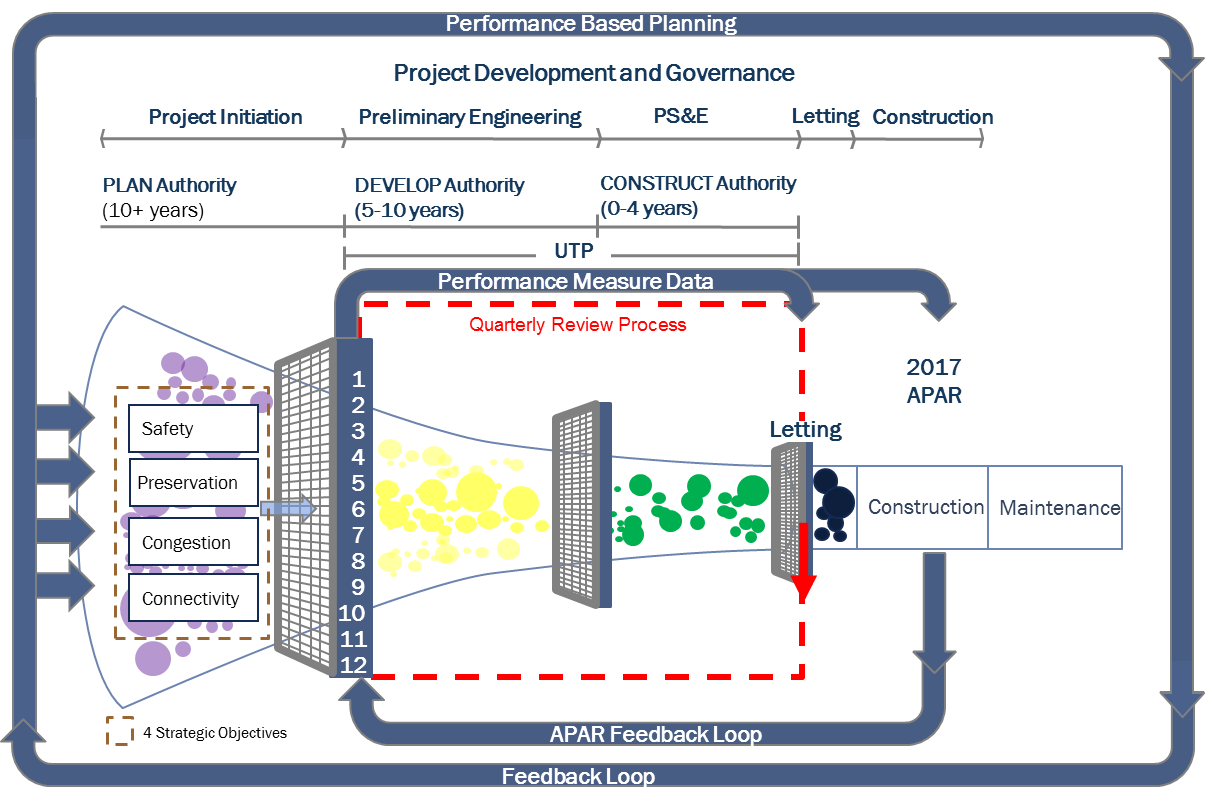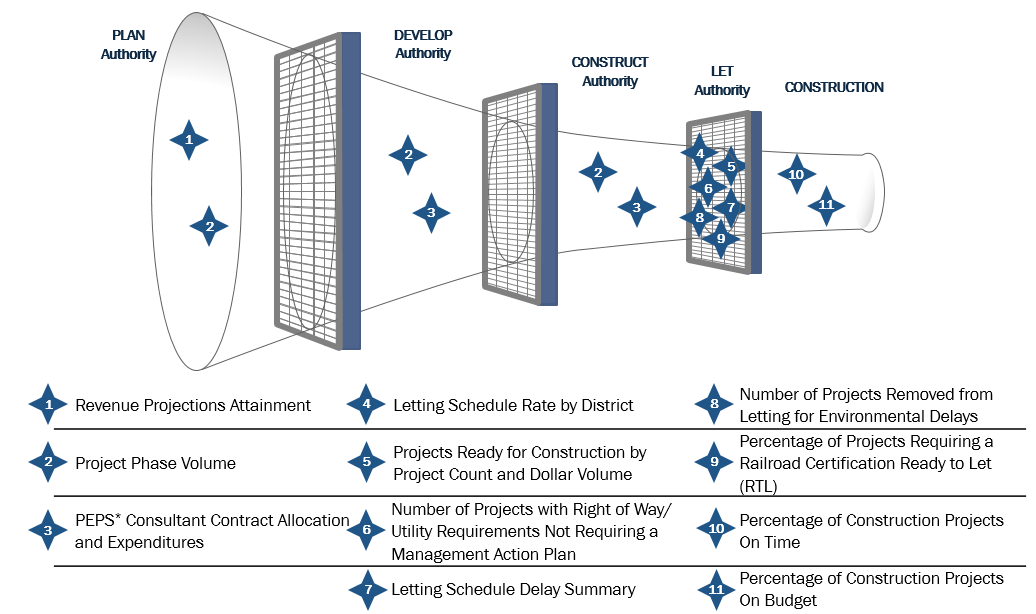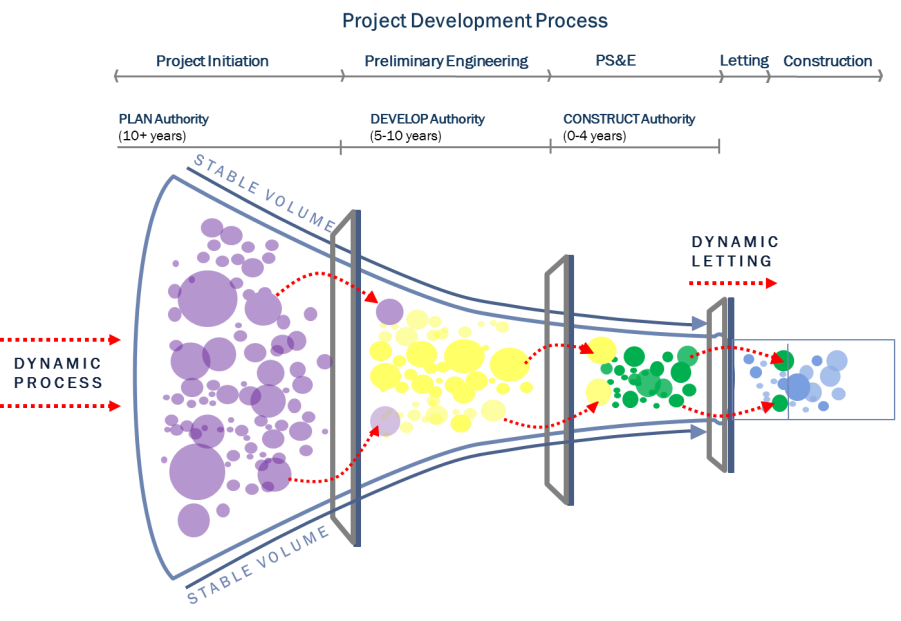Section 2: APAR Process
Anchor: #i999260Development cycle steps and timeline
With the passing of several federal and state legislative requirements since 2011, and with additional state funding, TxDOT made revisions to its business and governance processes. Figure 6-1 shows recent legislative directives (federal and state), the initiatives that TxDOT embarked upon in response to the directives, and how these TxDOT initiatives are documented in the annual reports thus far.
Figure 6-1. Directives and Initiatives Leading Up to the Annual Portfolio Achievement Report.
* Focused on “Delivering the Right Projects.”
** Approved by TxDOT Administration January 25, 2017.
Acronyms: Moving Ahead for Progress in the 21st Century Act (MAP-21); Proposition (Prop); House Bill 20 (HB 20); Fixing America’s Surface Transportation (FAST) Act; Senate Bill 312 (SB 312); Vision, Values, Mission, Goals, and Objectives (VVMGO); Performance Measures (PMs); Project Development Process (PDP); Quarterly Review Process (QRP); Modernize Portfolio and Project Management (MPPM).
APAR is produced each fiscal year by the end of October. TxDOT Administration reviews and approves in November. It is part of the Quarterly Review Process (QRP) and approved during Quarterly Review Meeting (QRM), first quarter (QRM1).
TxDOT’s Quarterly Review Process (QRP) relies on a rigorous process involving TxDOT divisions and districts participating in quarterly meetings, monthly data collection, and data analysis. See Figure 6-2. This process allows for the monitoring of the agency’s performance in terms of budgeting, planning, and programming of the department’s project portfolio against a set baseline. The ultimate objective of the QRP is to bring the data-driven project development process into alignment with project funding, prioritization, and development.
Figure 6-2. The Focus of QRP and APAR.
One example of how the data is measured is by the quarterly and annual review of the Key Performance measures (KPMs) highlighted in the APAR.
The performance measures included in the report are focused on the TxDOT goal “Deliver the Right Projects—implement effective planning and forecasting processes that deliver the right projects on time and on budget.” Figure 6-3 illustrates how the performance measures relate to the project development phase in which the activities are measured in the funnel. While some activities occur in only one phase, others apply to more than one phase. The latter performance measures are repeated in the funnel.
Figure 6-3. Performance Measures and Project Development
TxDOT needs robust forecasting, planning, and programming processes and a cadence of meetings to get projects developed, right-of-way purchased and projects let as funding becomes available. The UTP is the framework that connects long-range and short-term plans by providing investment and distribution strategies (programs and allocations) to achieve the desired performance targets. The UTP serves as the vehicle that sets planning targets for each District, Division, and MPO to enable successful lettings by ensuring enough projects are developed and ready to let. Since transportation projects can take years to develop – especially very complex projects - TxDOT needs to plan the appropriate volume of projects to ensure that letting targets are met (i.e., project can be advanced) if additional funding becomes available and/or if projects are canceled or become inactive during that phase. The planning target volumes therefore need to remain reasonably stable over time to provide the agency with the ability to remain dynamic and successful at meeting target letting volumes. See Figure 6-4.
Therefore, the overall project development process is analyzed emphasizing a review of project milestones and identifying projects that are at high risk to meet their letting dates.
This annual review is reported in the APAR.
Figure 6-4. The Dynamic Letting Process
Anchor: #i999353Published APAR Depository
APARs are located at APAR.



